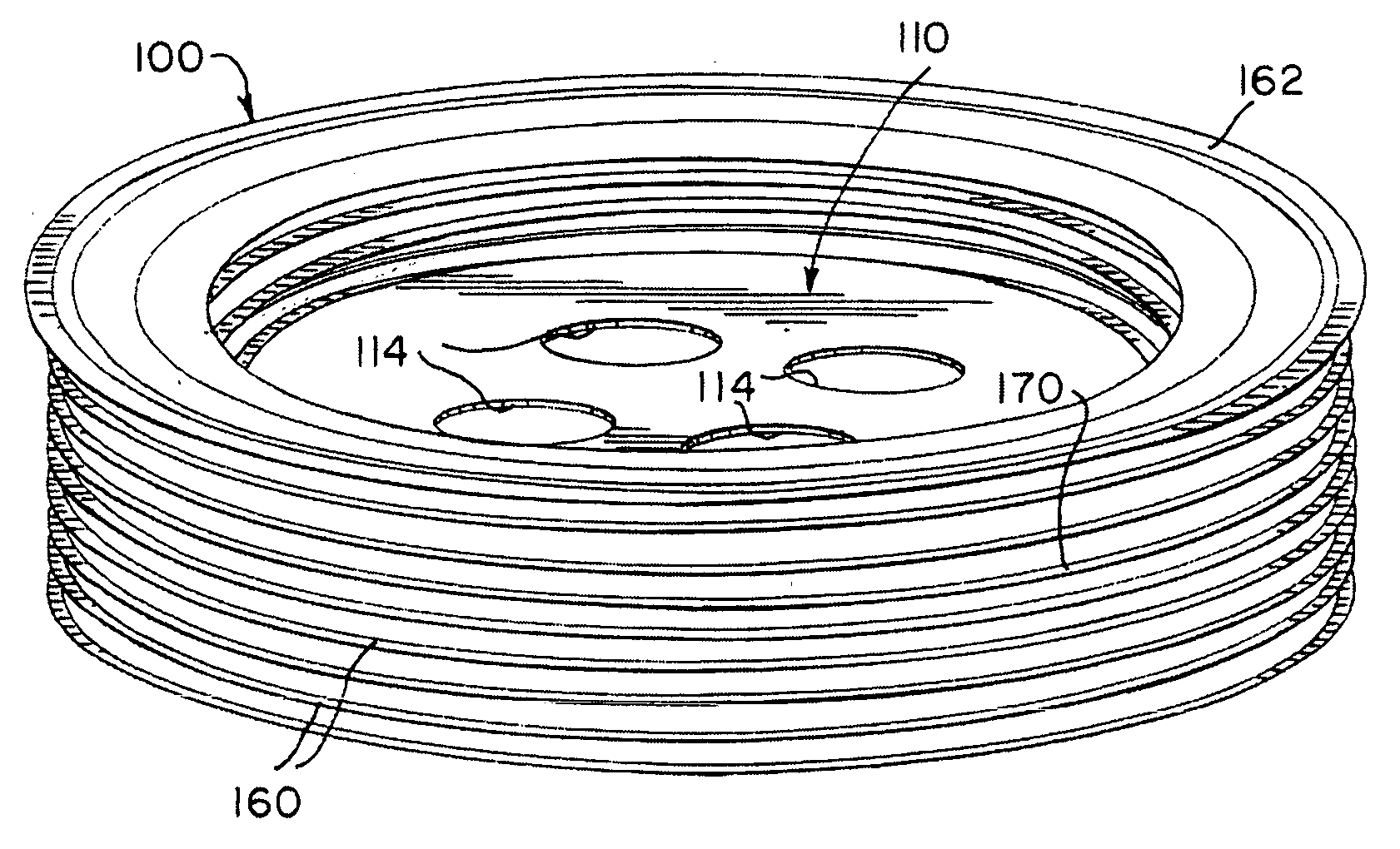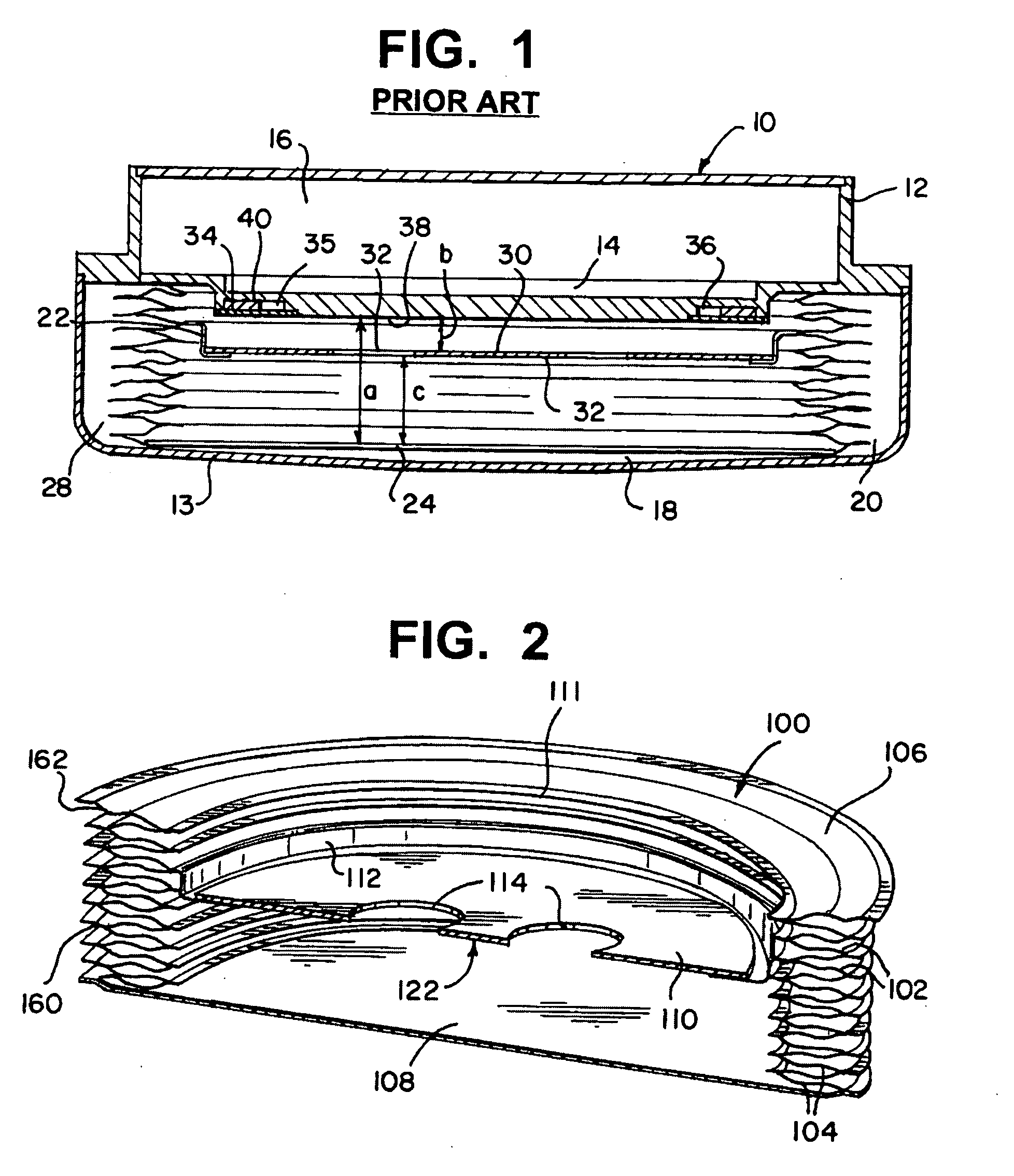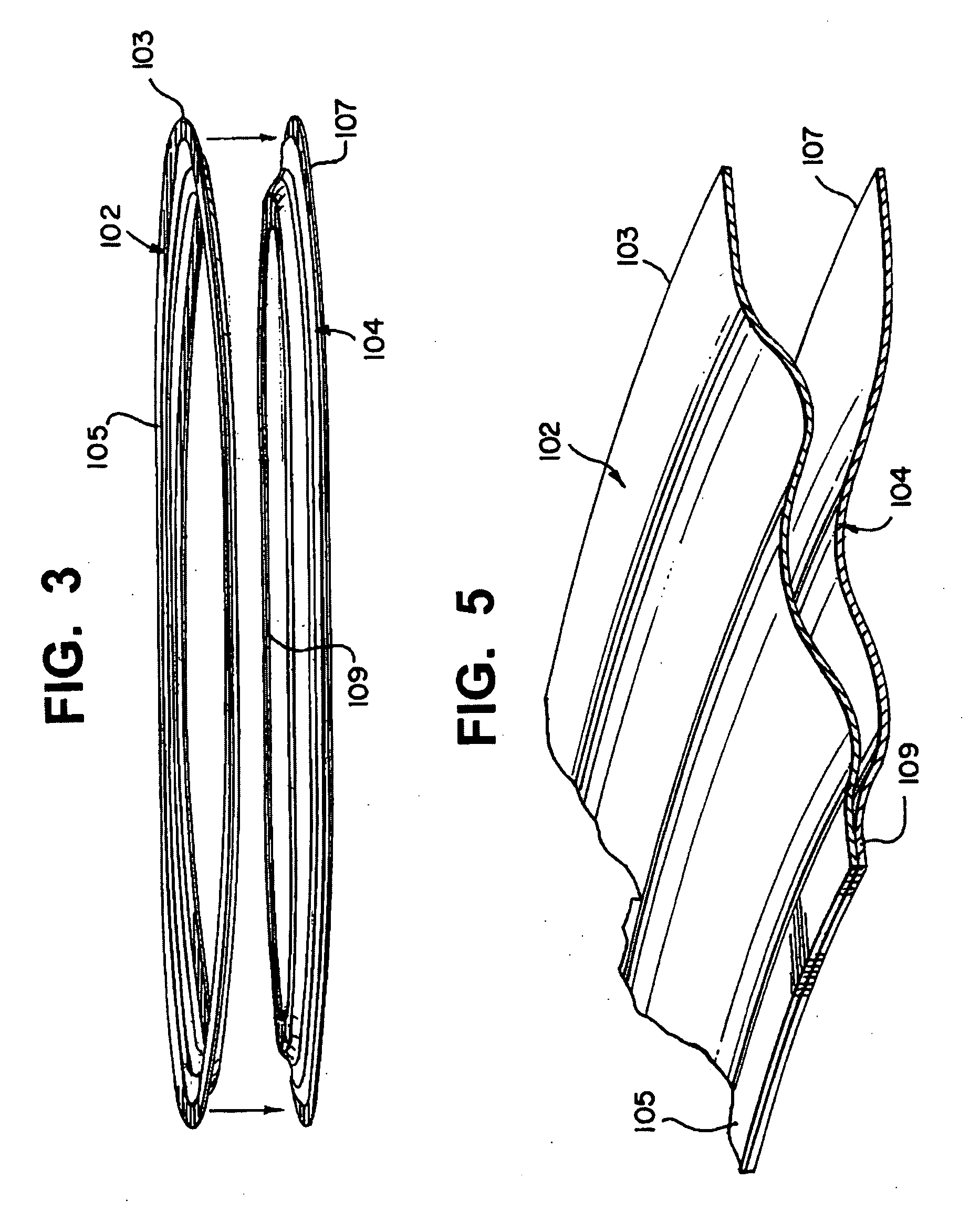Method of Making a Metal Bellows Assembly Having an Intermediate Plate
a technology of metal bellows and intermediate plates, which is applied in the direction of manufacturing tools, mechanical equipment, and sanders, etc., can solve the problems of insufficient variation of measured inductance to provide accurate measurements, and inaccessibility for long periods of time, and achieve the effect of convenient movemen
- Summary
- Abstract
- Description
- Claims
- Application Information
AI Technical Summary
Benefits of technology
Problems solved by technology
Method used
Image
Examples
Embodiment Construction
[0035]Referring to FIGS. 2 and 12, a bellows 100 (cross-sectional view in FIG. 2) is shown including a plurality of upper diaphragm rings 102 (hereinafter called “upper rings”) edge-welded to a plurality of lower diaphragm rings 104 (hereinafter called “lower rings”, a top ring 106, a bottom plate108, an intermediate plate 110 and an intermediate-plate support ring 112. The bellows 100 shown in FIG. 12 is manufactured primarily by welded pre-cut and formed parts together in a predetermined order, as described below.
[0036]According to the method of manufacture of the present invention, each upper and lower ring 102, 104, top ring 106, bottom plate 108, an intermediate plate 110 and an intermediate-plate support ring 112 is made by cutting a predetermined shape from an appropriate bio-compatible material, such as titanium, stainless steel, an appropriate composite, alloy, or a laminate made up of different metals and / or composites.
[0037]All the main parts of the bellows 100, including...
PUM
| Property | Measurement | Unit |
|---|---|---|
| volumes | aaaaa | aaaaa |
| volume | aaaaa | aaaaa |
| volume | aaaaa | aaaaa |
Abstract
Description
Claims
Application Information
 Login to View More
Login to View More - R&D
- Intellectual Property
- Life Sciences
- Materials
- Tech Scout
- Unparalleled Data Quality
- Higher Quality Content
- 60% Fewer Hallucinations
Browse by: Latest US Patents, China's latest patents, Technical Efficacy Thesaurus, Application Domain, Technology Topic, Popular Technical Reports.
© 2025 PatSnap. All rights reserved.Legal|Privacy policy|Modern Slavery Act Transparency Statement|Sitemap|About US| Contact US: help@patsnap.com



